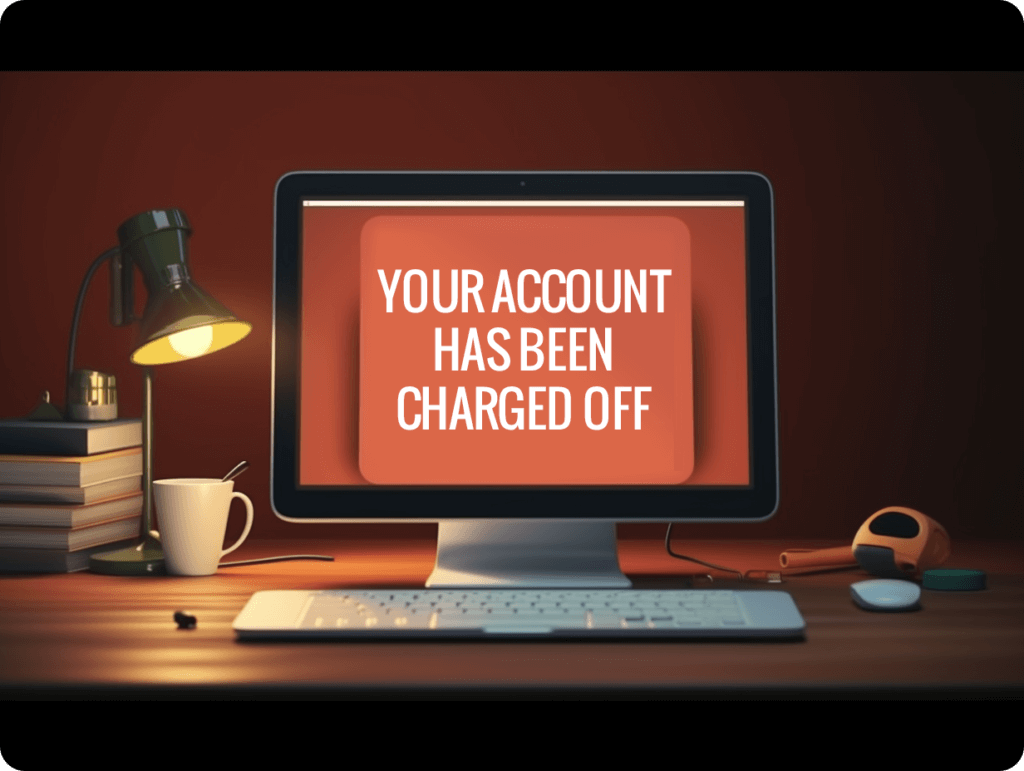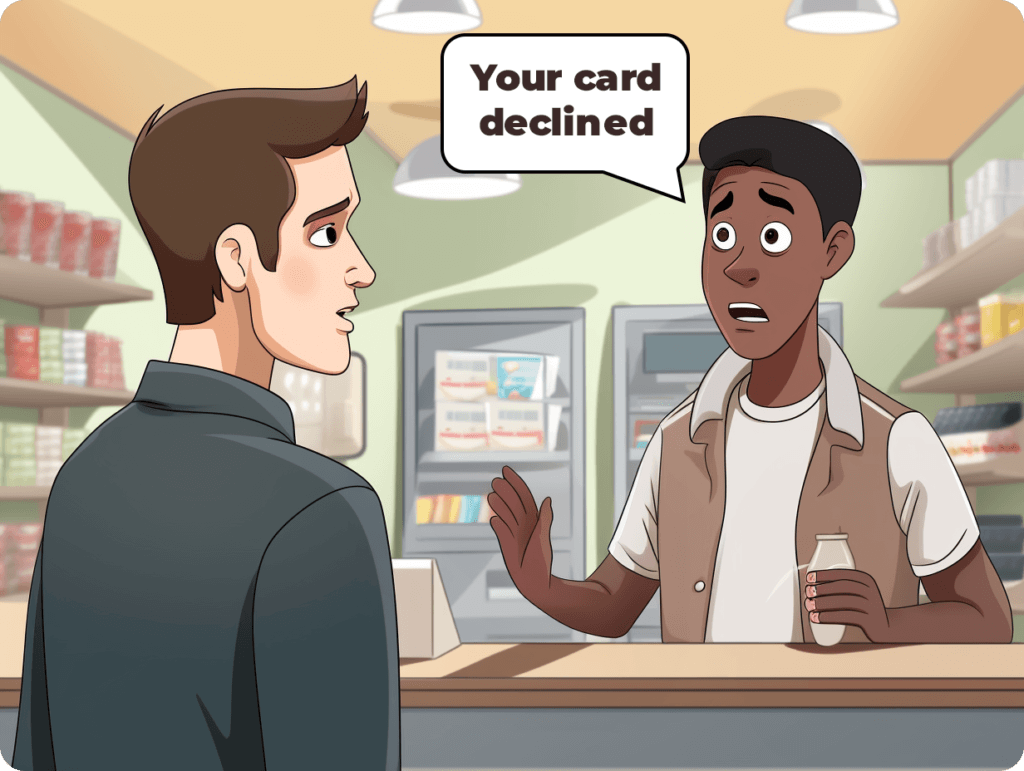- Blogs
- /
- This is What Happens When You Claim Insolvency and 4 Ways to Plan
This is What Happens When You Claim Insolvency and 4 Ways to Plan

Summary
Insolvency is a complex procedure with many legal and financial consequences. And it doesn’t matter whether it’s your personal or business finances; understanding what happens when you claim insolvency is crucial.
That’s why we’ll be peeling back the curtain to reveal how insolvency works and what it means for your financial future.
Let’s jump in.
Key Takeaways
- Insolvency occurs when a person or business cannot pay their debt.
- Insolvency can impact your credit score and assets. Plus, it’d also attract legal consequences.
- Low cash flow and a decline in your revenue may indicate insolvency.
- Reducing debt, spending habits, and building your emergency fund can help avoid insolvency.
- Filing for bankruptcy can help you reduce some of the consequences of insolvency.
What is Insolvency
Insolvency occurs when you cannot pay what you owe. To claim insolvency, you must show that your debts surpass your assets. This situation often results in legal actions like bankruptcy. And that’s because when you claim insolvency under state law, you face certain liabilities and financial obligations.
Here’s What Happens When You Claim Insolvency

1. It Impacts Your Credit Score and Financial Reputation
Insolvency significantly impacts your credit score and financial standing. That’s because claiming insolvency typically involves declaring bankruptcy. And bankruptcy is a legal process where you acknowledge you cannot repay your debts as they become due.
A bankruptcy declaration remains on your credit report for several years. And it’d affect everything about your creditworthiness and ability to obtain new credit or loans.
This means you won’t be able to get a mortgage or auto loan from lenders, and even landlords may choose not to rent you an apartment.
It can also affect other aspects of your financial life, such as renting an apartment, obtaining insurance, or securing employment, as many employers perform credit checks as part of the hiring process. All because your low credit score marks you as a high-risk borrower.
It’s worth noting that the impact on your credit score varies depending on the type of bankruptcy you file. Filing a Chapter 7 bankruptcy involves liquidating your assets to repay creditors, while Chapter 13 involves restructuring your business and creating a debt repayment plan.
However, these bankruptcies will significantly drop your credit score, making it challenging to qualify for credit cards, loans, or mortgages.
2. It Impacts Your Personal and Business Assets
Claiming insolvency has a massive impact on your personal and business assets. How, you ask? For your personal assets, when you claim insolvency, whether through bankruptcy or another legal process, the court may liquidate certain assets to repay creditors.
This liquidation can include selling your properties, vehicles, investments, and other valuable possessions to satisfy outstanding debts. However, the extent to which your assets are liquidated depends on the type of bankruptcy you file and the exemptions available under state or federal law.
In some cases, certain assets, like your primary residence and retirement accounts may be protected from liquidation, but others may be at risk.
If you run a business, insolvency can lead to liquidating company assets to repay creditors. This can involve selling equipment, inventory, real estate, and other business assets to settle outstanding debts.
And yes, this process often involves restructuring or reorganizing your business to repay creditors over time or through a court-approved repayment plan.
3. Attracts Severe Legal Consequences

It doesn’t matter whether you run a business or not, claiming insolvency can lead to severe legal consequences like:
a. Legal Action by Creditors: When you claim insolvency—whether as a person or business—your creditors may decide to take legal action to recover their debts.
This can include anything from lawsuits, judgments, and enforcement actions like wage garnishment, bank levies, or even property liens.
b. Bankruptcy Proceedings: Most times, when folks struggling with insolvency can’t resolve their financial situation through negotiation or repayment plans, filing for bankruptcy may become necessary.
Bankruptcy involves complex proceedings, including liquidating assets (Chapter 7 bankruptcy) or reorganizing debts (Chapter 11 or Chapter 13 bankruptcy).
And it can have long-term consequences on your credit, financial reputation, and future borrowing ability.
c. Official Liability: If your business claims insolvency, you and your business executives may face personal liability if found to have been engaged in wrongful or fraudulent conduct that contributed to the company’s insolvency.
This can include breaches of fiduciary duty, mismanagement of funds, or fraudulent activities.
d. Criminal Charges: In some extreme cases of insolvency involving fraud, embezzlement, or other criminal activities, people claiming insolvency may face criminal charges and prosecution. If convicted, this can result in fines, restitution orders, and even imprisonment.
4. It Impacts Your Future Financial Activities
Insolvency affects everything from your ability to access low-interest credit to your employability. That said, here’s a quick rundown of how insolvency can impact your future financial activities:
a. Damages Your Creditworthiness: One of the first damages insolvency does is causing a significant drop in credit score. This makes it incredibly challenging for the insolvent person or business to qualify for loans, credit cards, or other forms of credit in the future.
You see, lenders are often reluctant to extend credit to individuals or businesses with a history of insolvency due to the perceived risk of default.
And if you’re fortunate even to get credit, it will come with super high-interest rates and unfavorable terms.
b. Limits Your Employment Opportunities: Some employers conduct credit checks as part of their hiring process. We see this often, particularly for positions involving financial responsibilities or access to sensitive information.
Having a history of insolvency on your credit report may raise concerns about your financial stability and responsibility. And that could impact your job prospects.
c. Damages Your Business Opportunities: If you run a business, insolvency can affect your access to financing, partnerships, and investment opportunities.
That’s because word travels fast in the industry, and your potential lenders and investors may be hesitant to support your business if it has a history of financial instability.
d. Attracts Higher Premiums: Insurers always consider your credit history when calculating premiums for your home, car, or life insurance policies. Folks and businesses battling insolvency struggle to get coverage or may pay higher premiums.
5. It Impacts Your Privacy
Claiming insolvency can wreck your personal or business’s privacy. That’s because insolvency often involves disclosing your financial information to creditors, courts, and any party involved in the insolvency process.
It may not sound like much, but insolvency proceedings typically require detailed financial disclosures.
This disclosure often includes income, assets, debts, and expense disclosure. And yes, this information may need to be shared with creditors, bankruptcy trustees, and government agencies overseeing insolvency.
But it doesn’t end there because bankruptcy filings and other insolvency proceedings are matters of public record, so specific process details may become publicly accessible.
This can include information about debts, assets, and court proceedings. Once all this information gets out there, it can affect your business’s reputation.
Three Major Signs of Insolvency You Must Watch

1. Watch Your Financial Ratios
Your business’s financial ratios serve as its performance report card, indicating its financial health.
So, always watch for these essential ratios:
- Your Current Ratio, which compares your current assets to liabilities.
- Your Quick Ratio, which measures your company’s ability to settle short-term liabilities with liquid assets.
- Your Debt-to-Equity Ratio, which compares your total debt and liabilities to shareholder equity.
These ratios gauge your business’s capacity to cover its financial obligations. Getting a current ratio below ‘1’ suggests potential insolvency, and that’s because it shows your company is experiencing difficulty in repaying short-term debts.
2. Watch for Cash Flow Problems
Cash flow is the overall movement of money in and out of your business. If your business is struggling with a negative cash flow, that suggests more money is leaving than entering your company. This could indicate the start of significant financial difficulties.
To stop this, it’s crucial to develop precise cash flow projections that forecast future cash inflows and outflows based on anticipated sales and expenses. This would help you predict periods of financial strain and plan accordingly.
You can use strategies like tightening your credit policies, reducing unnecessary expenses, and negotiating extended payment terms with suppliers to tackle your cash flow challenge.
3. Watch Your Business’s Daily Operations
Observing your business’s day-to-day operations is one of the best ways to identify potential signs of insolvency. And one notable indication is prolonged sales revenue without corresponding expense adjustments.
Additionally, reduced employee morale and high turnover may signal internal organizational challenges. And this could be affecting your business’s performance and sustainability.
Furthermore, the situation could worsen if your business’s management often delays performing essential equipment maintenance or repairs due to budget constraints. All this could be revealing your business’s underlying cash flow issues.
Here’s How You Can Claim Insolvency

Step 1: Evaluate Your Financial Situation
The first step to claim insolvency is assessing your financial records. Look at what you owe and what you own. Your goal here is to determine if you’re currently undergoing balance sheet insolvency, which is when your debts surpass your assets.
Also, you’d need to evaluate how money moves in and out of your accounts. If there’s not enough cash to cover expenses, it could indicate cash flow insolvency. Check all financial obligations: bills, loans, income sources.
Understanding these aspects will help you gauge your indebtedness level. And the reason this is important is that claiming insolvency involves understanding if your financial instability is based on factors like debts or cash flow issues.
Step 2: Consult with Financial Advisors or Insolvency Practitioners
To claim insolvency, you typically need to follow certain legal procedures specific to your state of residence.
These procedures often involve filing a petition or application with the relevant court or authority providing detailed information about your financial situation, including your assets, liabilities, income, and expenses.
Getting advice from experts like financial advisors or insolvency practitioners is crucial when claiming insolvency.
That’s because these professionals have the knowledge to analyze your finances thoroughly and suggest appropriate solutions in navigating the different options available during an insolvency claim.
Step 3: Choose the Appropriate Insolvency Procedure
Choosing the right course of action for resolving financial troubles is vital when claiming insolvency. Different situations may require distinct procedures, such as bankruptcy or a Company Voluntary Arrangement (CVA).
Understanding each available option and its consequences plays a significant role in selecting the most suitable path forward.
Two Major Legal Procedures Involved in Insolvency
Individual Voluntary Arrangement (IVA)
An Individual Voluntary Arrangement (IVA) is a helpful option for people facing financial challenges. It allows them to work out a repayment plan with their creditors without going through bankruptcy proceedings.
IVAs are a great tool because they enable folks to take control of their debts and avoid the severe consequences of bankruptcy, like losing assets or facing restrictions on future financial activities.
With IVAs, you can manage your finances responsibly while systematically addressing your debt obligations. And by opting for an IVA, you can demonstrate your commitment to repaying what you owe and avoid the stigma associated with filing for bankruptcy.
Bankruptcy
Bankruptcy is a formal process available to anyone or businesses unable to meet their financial obligations due to large debts or other reasons leading to insolvency.
When considering bankruptcy, people or businesses in distress must thoroughly understand the implications before proceeding further.
Bankruptcy can help folks get relief from overwhelming debts by liquidating assets or proposing a repayment plan approved by the court.
The bankruptcy process involves intricate legal steps overseen by the courts and aims at providing fair resolutions between debtors and creditors.
By declaring bankruptcy, insolvent people and businesses can navigate through challenging financial circumstances under legal guidance while working towards regaining gradual control over their economic stability.
5 Ways to Avoid Insolvency
1. Maintain Adequate Cash Flow
Always monitor your cash flow. Doing this will help you ensure that you or your business has enough money to cover any expenses, debt obligations, and unexpected costs. Also, do your best to implement effective cash management practices like budgeting.
2. Reduce Your Debt
One of the best ways to prevent insolvency is by proactively reducing your company’s debt burden. You can do that by refinancing high-interest loans, negotiating better terms with creditors, or consolidating your debt.
Avoid taking on excessive debt and prioritize paying down existing liabilities to improve your financial health.
3. Diversify Your Income Streams
Reduce your reliance on a single source of income. Make it your primary goal to diversify your revenue streams. Consider freelancing, turning your hobbies into a small business, or learning a high-income skill.
And if you run a business, explore new markets, products, or services that align with your core competencies and target customer needs. This can help you reduce the impact of economic downturns or industry-specific challenges.
4. Reduce Your Spending
Take the time to identify opportunities to streamline your expenses. Evaluate every area of your life for potential cost-saving measures, like cooking at home, unsubscribing from non-essential apps, and using energy-efficient appliances.
5. Build Emergency Funds
Start setting aside funds as an emergency reserve to cushion yourself against unforeseen financial setbacks or downturns. Your goal should be accumulating at least $1,000 or six months’ worth of your living expenses to provide a financial safety net during challenging times.
Always Tread Carefully
Claiming insolvency isn’t a walk in the park. The consequences can be heavy, so tread carefully. Legal procedures are no joke, and mistakes can cost you big time. So, seek professional legal guidance if you’re in deep waters.
It doesn’t matter whether you run a business or not. Pay attention to the significant signs of insolvency, what happens when you claim insolvency, and how to avoid insolvency. Doing this will give you the accurate knowledge you need to navigate insolvency.
FAQs
What is insolvency?
Insolvency occurs when an individual or business cannot meet financial obligations. It signifies a lack of liquidity to pay debts as they come due.
Is insolvency different from bankruptcy?
Yes. Insolvency means you can’t pay debts, while bankruptcy is a legal process to resolve debt issues. This means that insolvency is a financial state, whereas bankruptcy involves court proceedings.
How can I identify signs of impending insolvency?
Watch for signs like persistent cash flow issues, increasing debt levels, delayed payments to creditors, and declining profitability. These could indicate impending insolvency.
How do I determine my insolvency status?
Calculate your total debts and compare them to the value of your assets. If your debts are higher than what you own (assets), you are likely insolvent.
How can I claim insolvency?
To claim insolvency, you must follow specific legal procedures that involve declaring your inability to repay debts and seeking protection from creditors.
What are the consequences of claiming insolvency?
Claiming insolvency can impact your credit score, lead to asset liquidation, and restrict future borrowing opportunities.
Is consulting a lawyer necessary before claiming insolvency?
Consulting a lawyer is crucial when considering claiming insolvency. A legal expert can give you guidance on the process, implications, and ensure compliance with relevant laws.
Our Latest Blogs:

ThisIsJohnWilliams
FREE Strategy Session to Fix Your Credit Blogs / Dealing with financial difficulties is overwhelming. But when faced with...

ThisIsJohnWilliams
FREE Strategy Session to Fix Your Credit Blogs / Facebook Twitter Linkedin Instagram Share Summary Every savvy entrepreneur understands...

ThisIsJohnWilliams

ThisIsJohnWilliams
FREE Strategy Session to Fix Your Credit Blogs / Facebook Twitter Linkedin Instagram Share Summary Say you’ve finally found...

ThisIsJohnWilliams






